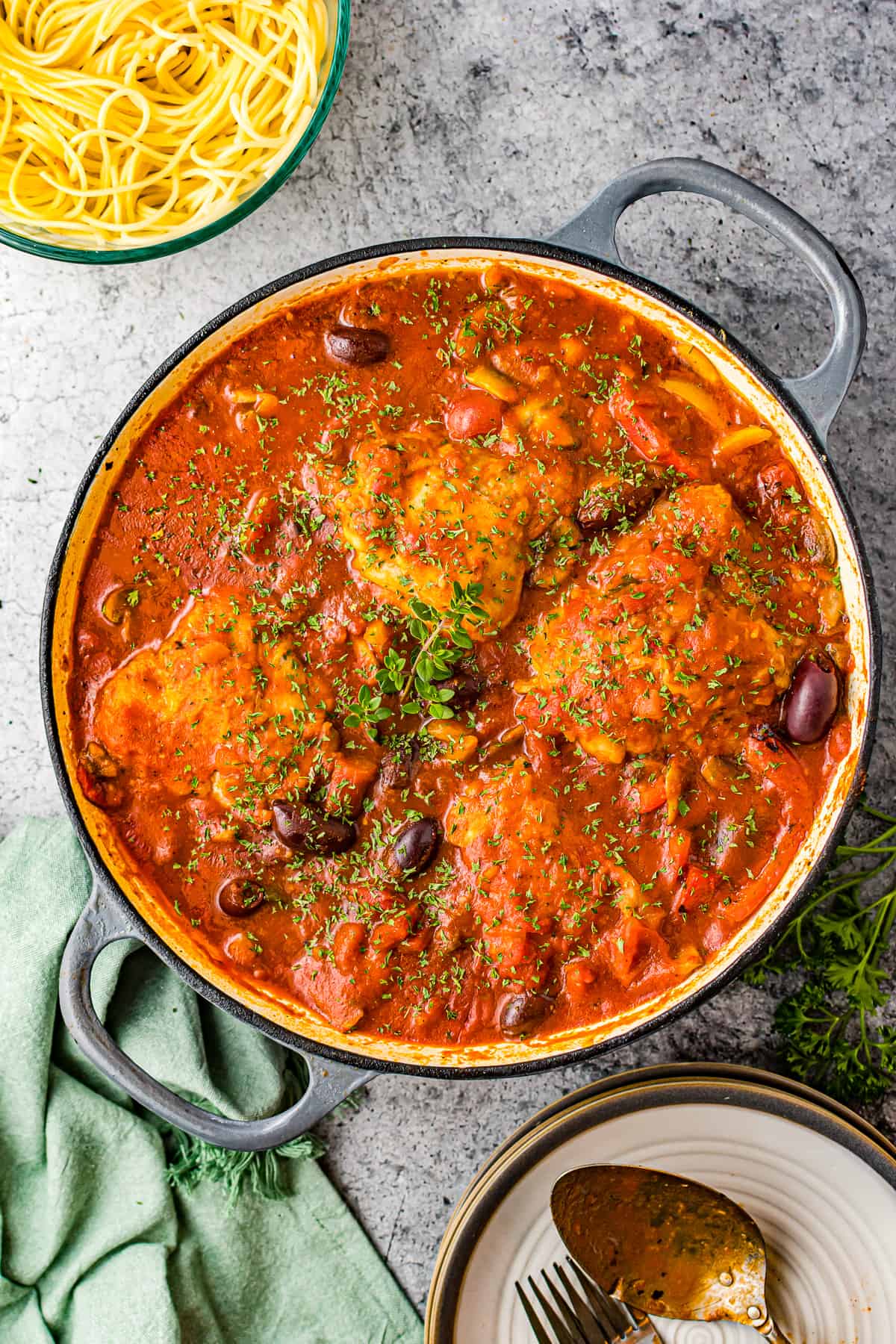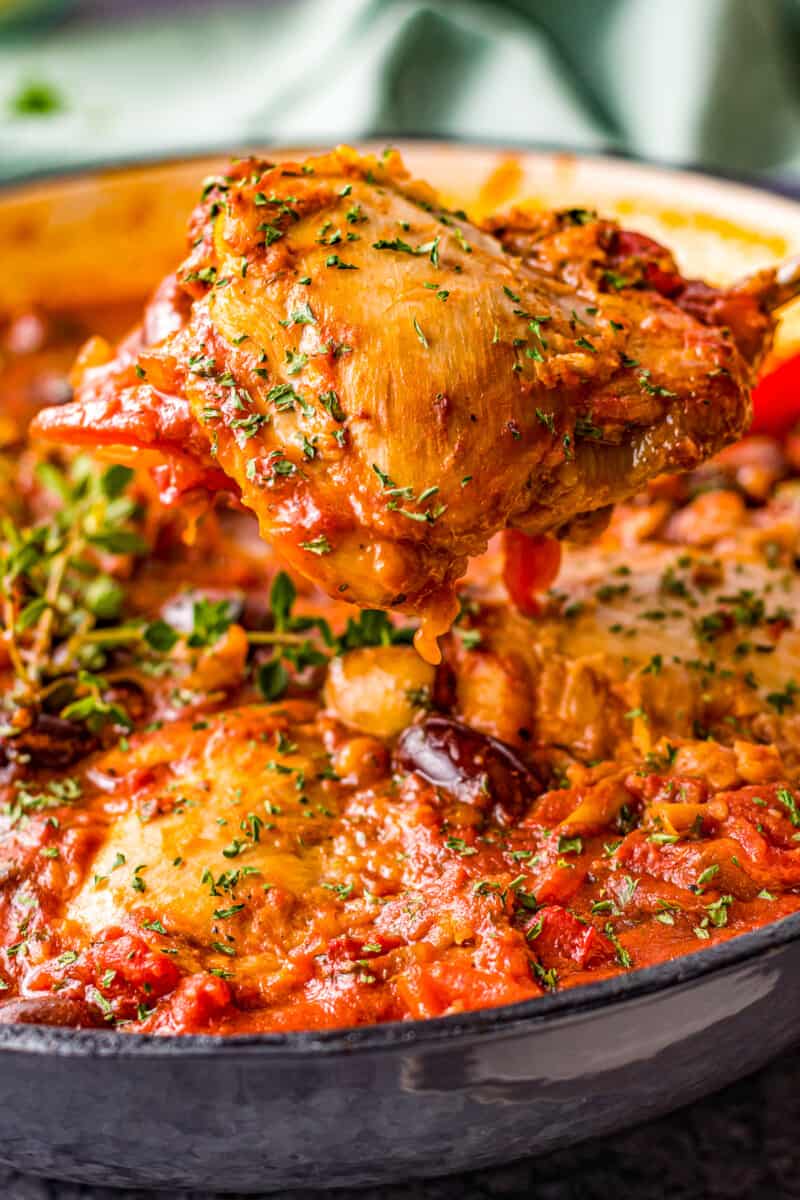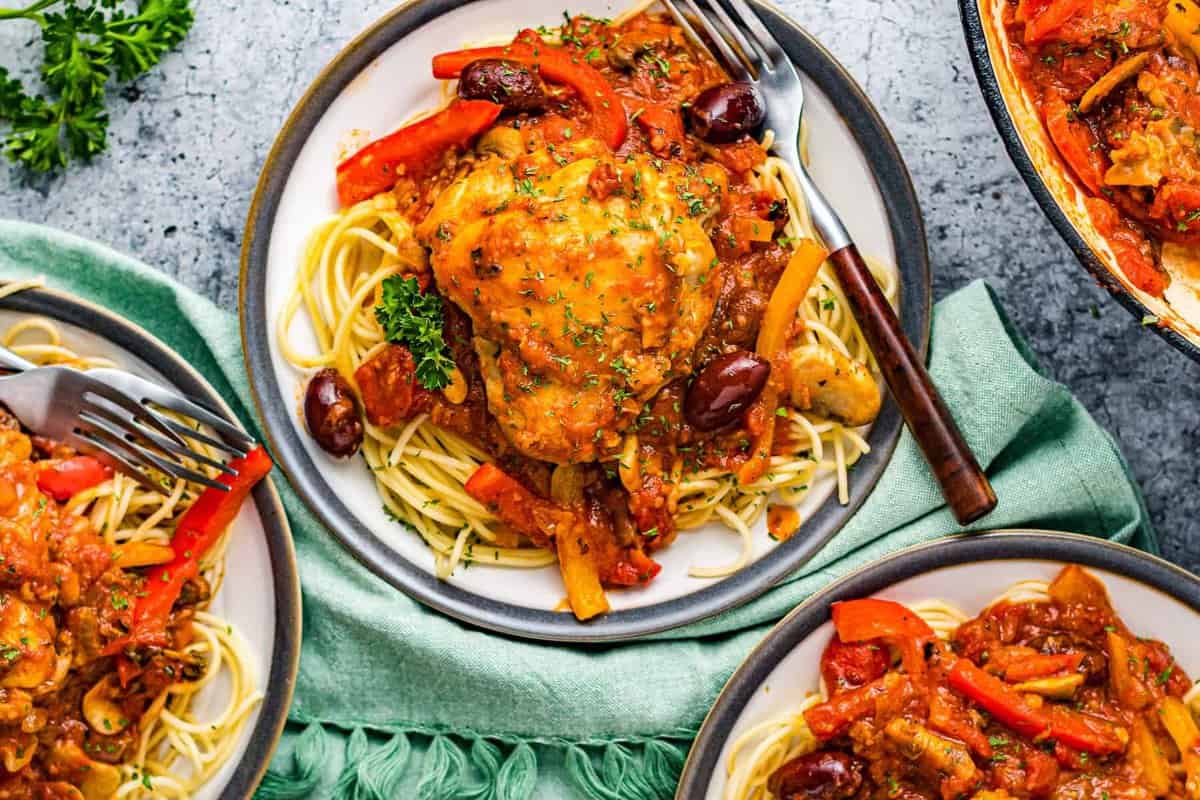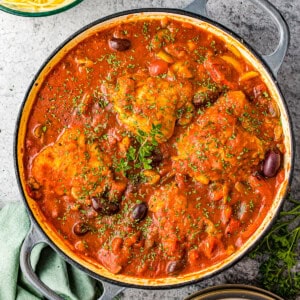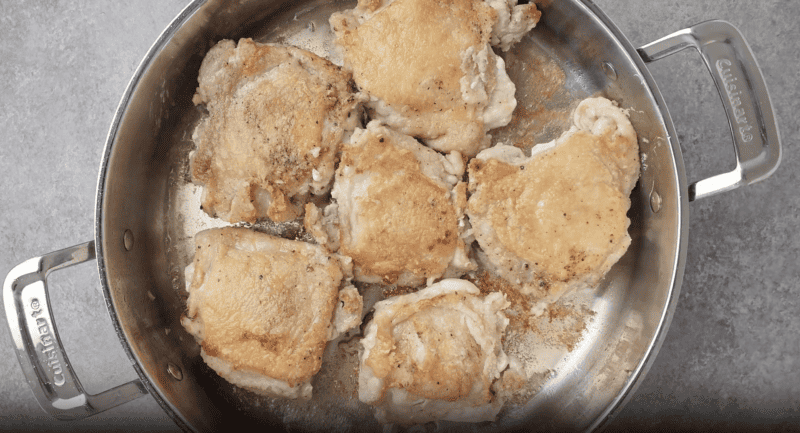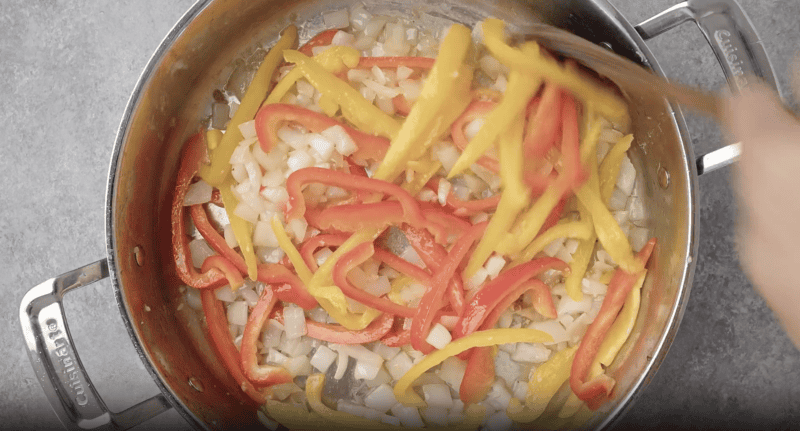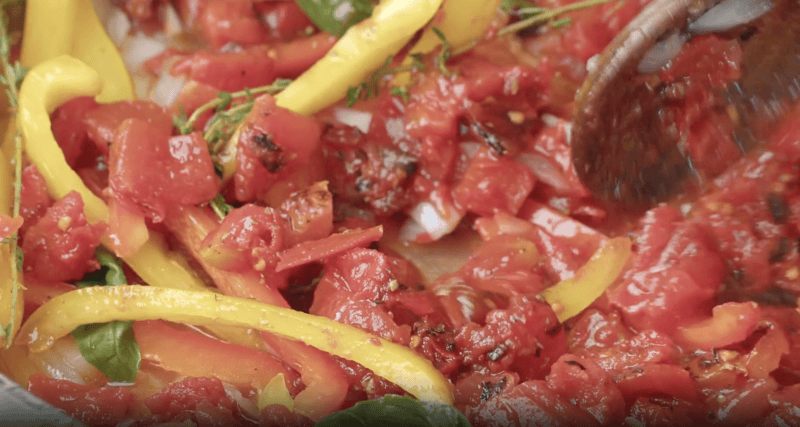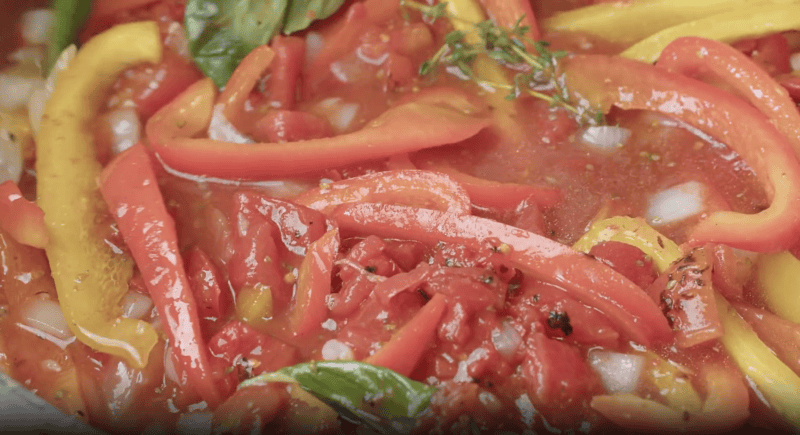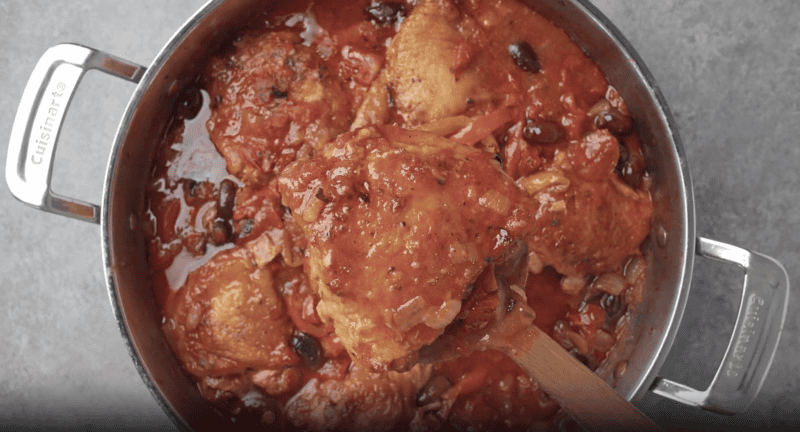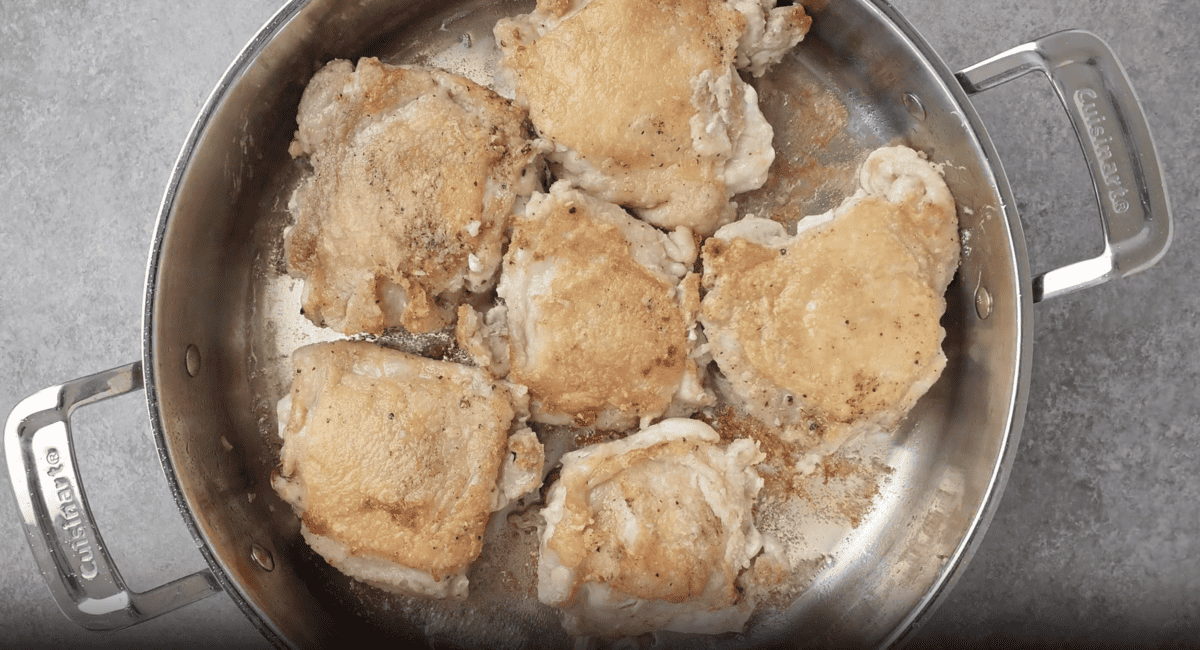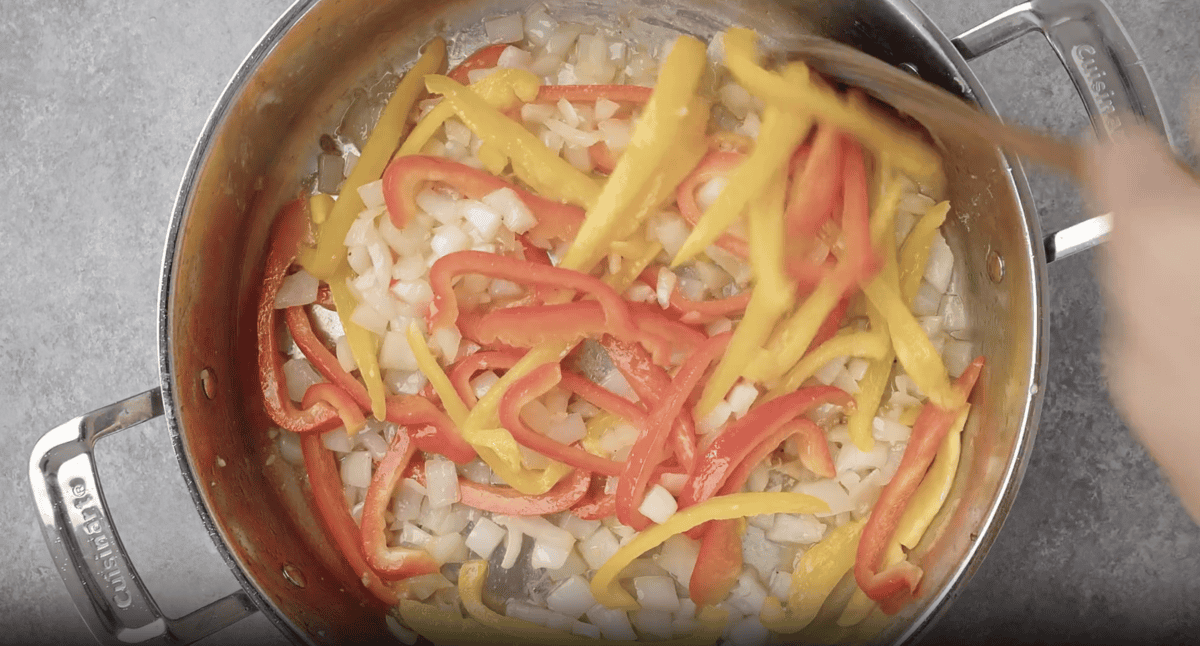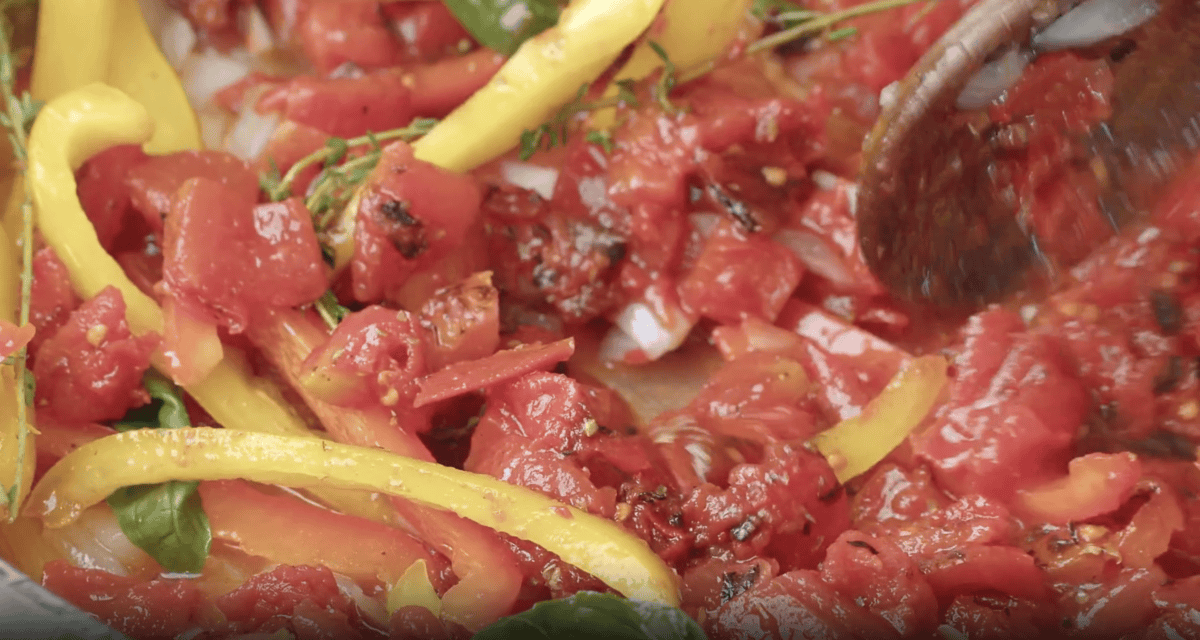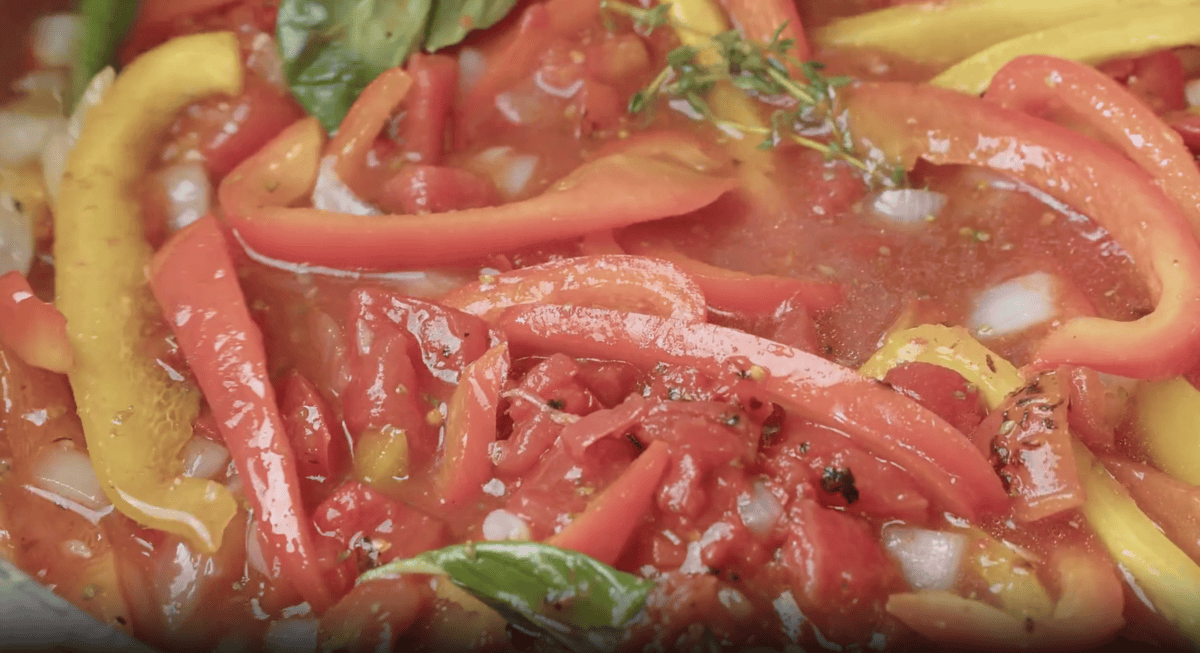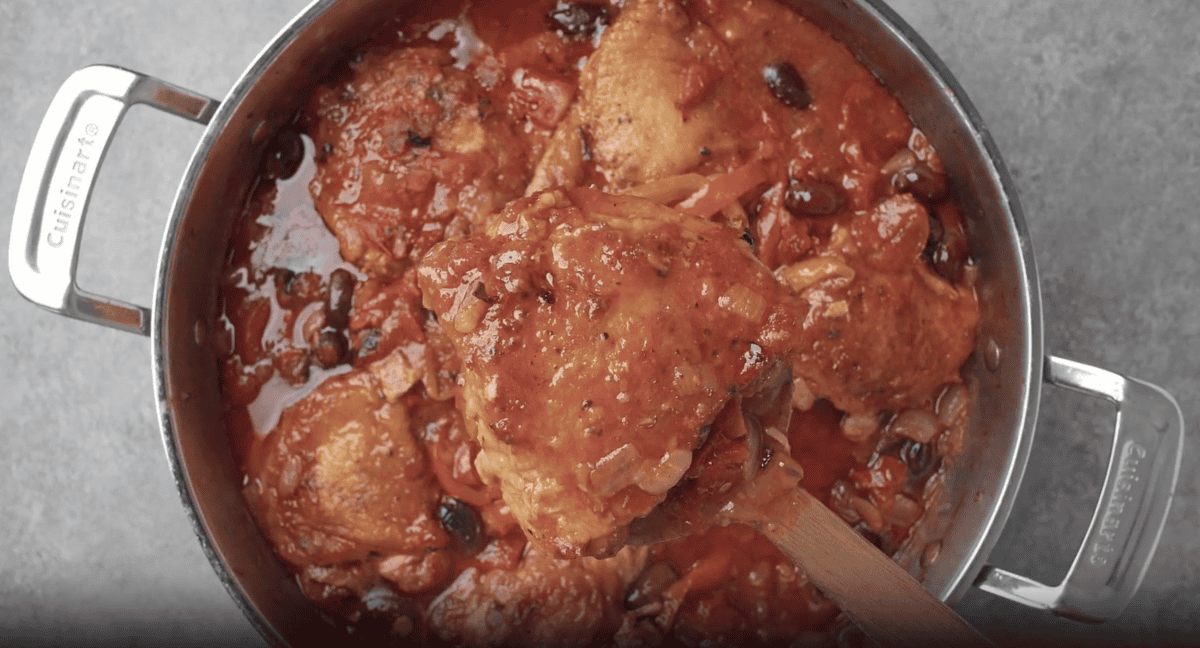Why we love this Chicken Cacciatore Recipe
This restaurant quality meal always impresses dinner guests! Here’s what makes it so fabulous:
The chicken: The chicken thighs are seared to golden brown perfection in hot butter after being dredged. I love the way the crispy, buttery crust forms! So simple: While this chicken cacciatore recipe may be pretty impressive, it’s so easy to make in just 30 minutes! Flavorful: Kalamata olives, garlic, red wine and more blend together to create the most flavorful medley of ingredients.
Why is it called chicken cacciatore?
Cacciatore is a traditional Italian dish, translated, it means “hunter.” It’s believed to have been first cooked by Italian hunters who threw together ingredients they had, like garlic and vegetables, over a fire.
How to Store and Reheat
You can store leftover chicken cacciatore in an airtight container in the fridge for 2-3 days. Reheat in the microwave for 30 seconds at a time, stirring each time it stops, until warmed all the way through. Try not to overheat it, you don’t want it to dry out.
How to Freeze
Let the chicken cacciatore cool to room temperature before freezing in an airtight container for up to 3 months.
Serving Suggestions
Traditionally, this chicken dish is served with fresh pasta, like spaghetti or fettuccini, and that’s probably my favorite way!
More Italian Chicken Recipes We Love
Chicken Alfredo Chicken Milanese Chicken Piccata Chicken Marsala Chicken Marengo Chicken Florentine Chicken Parmesan Chicken Francese
How to make Chicken Cacciatore Step by Step
Dredge the chicken: Pat the chicken thighs (2lbs) dry. In a bowl, combine the 1/2 cup flour, 1/2 tsp salt, pinch of pepper, 1 tsp thyme and 1 tsp oregano. Coat each chicken thigh in the flour mixture. Sear the chicken: Melt 2 tbsp butter in a skillet over medium-high heat. Add the chicken thighs and sear on both sides until golden brown. Cook the chicken: Reduce the heat to medium and add olive oil. Add 2 cups chopped white onions and sauté for 2-3 minutes. Add 4 cloves garlic, 1/2 cup sliced carrots and 2 sliced peppers and sauté for another 2-3 minutes. Mix in 2 tbsp tomato paste. Add a 14.5oz can of diced tomatoes and 1/4 cup red wine. Bring to a boil. Reduce the heat to low and mix in 1/4 cup heavy cream. Add the chicken back to the skillet and bake at 400°F for 10-12 minutes. Enjoy: While the chicken’s in the oven, cook the pasta according to package directions. Serve the chicken spooned all over the cooked pasta. Note: This recipe is one of those few exceptions on our site that has more than 10 ingredients. We try to keep things VERY easy around here, and limiting ingredients and time spent is one of our favorite ways. That being said, this recipe is too delicious to leave out of our recipe box! It’s an exception that is so flavorful and worth the extra ingredients if you have the time and resources to make it.

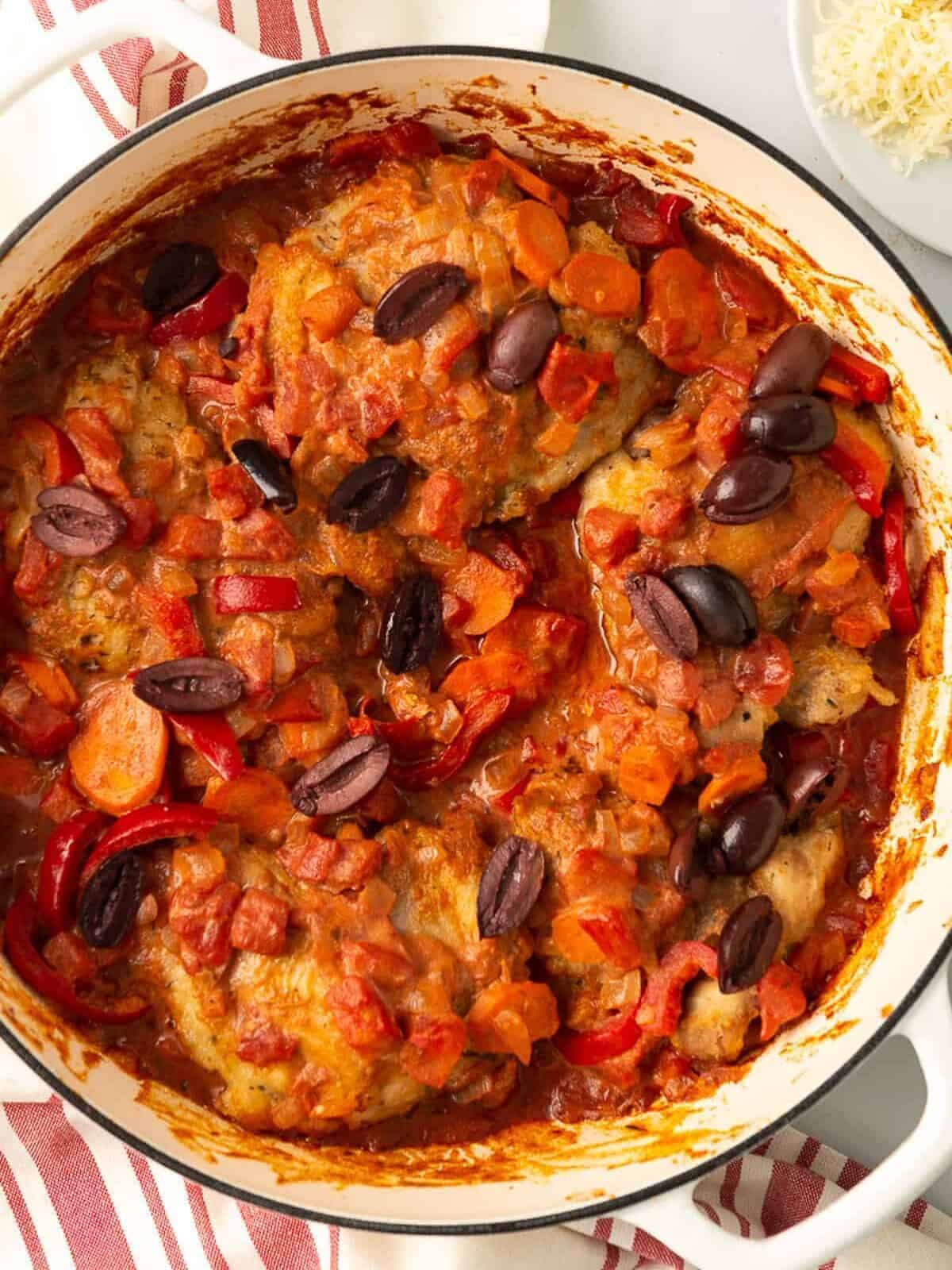
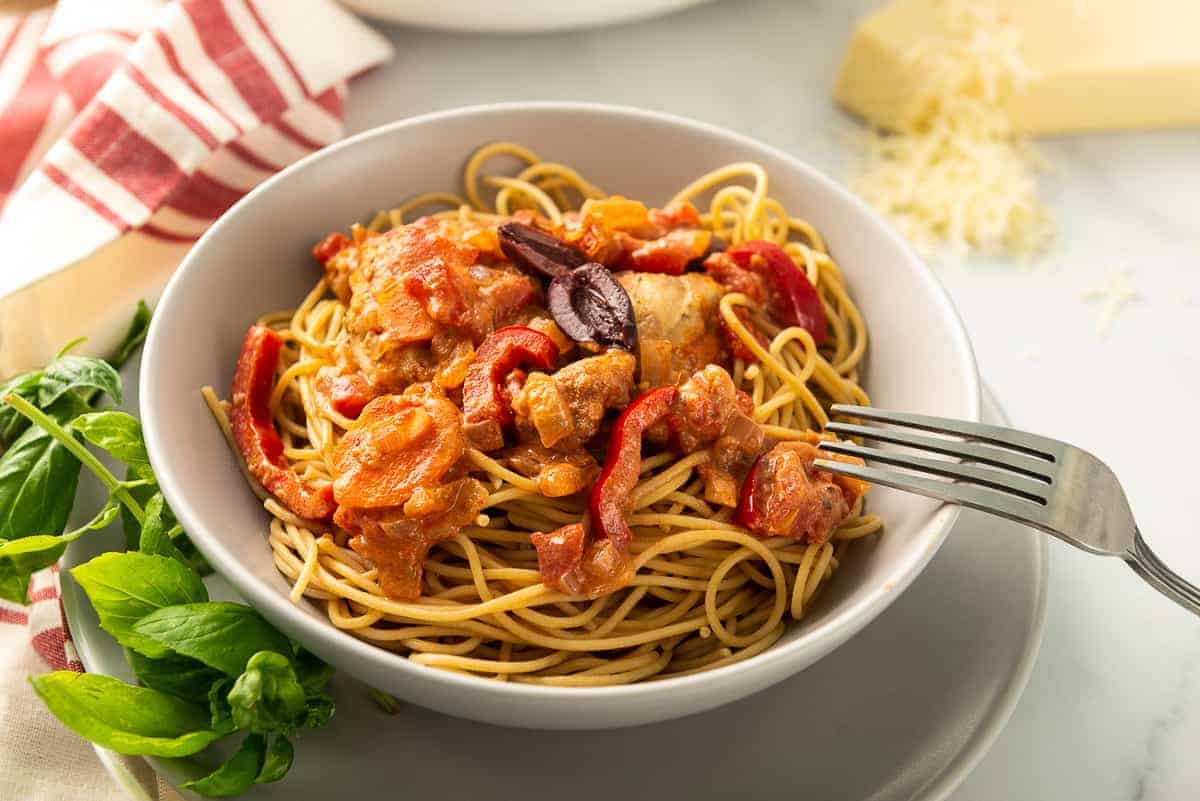

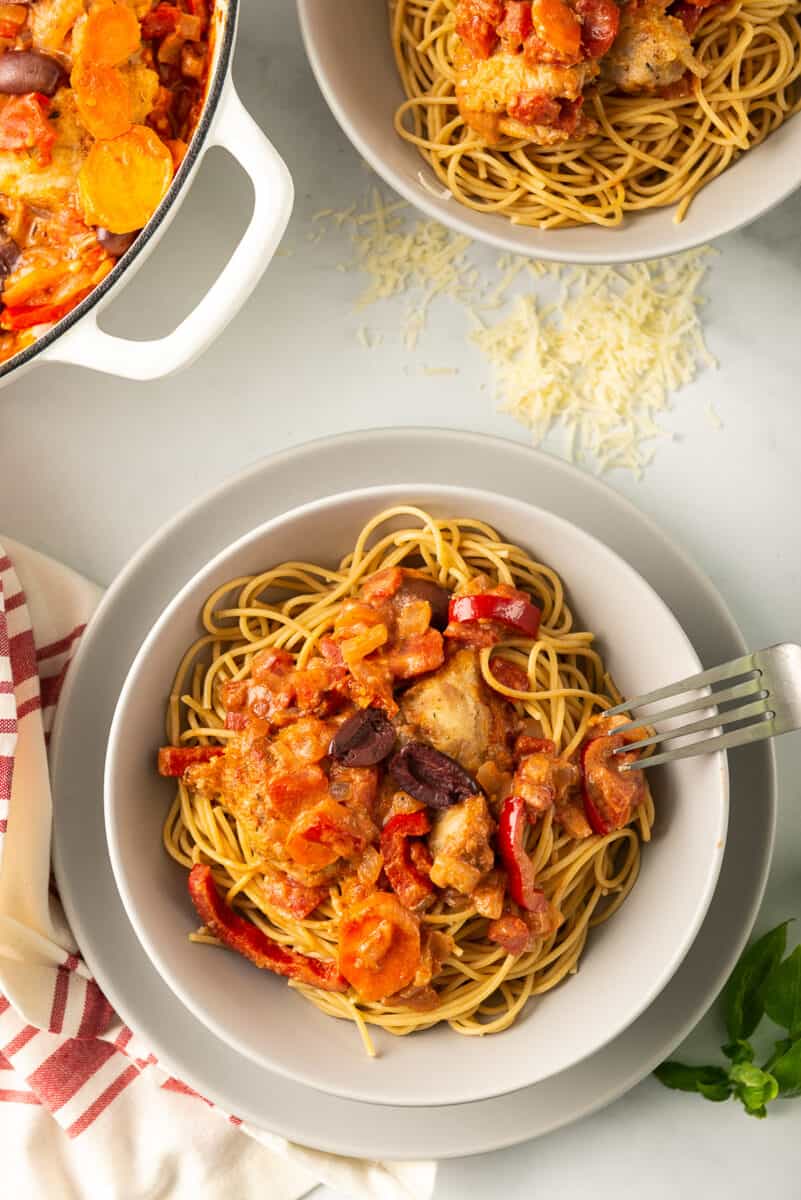
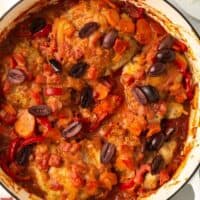



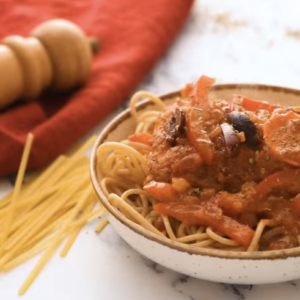


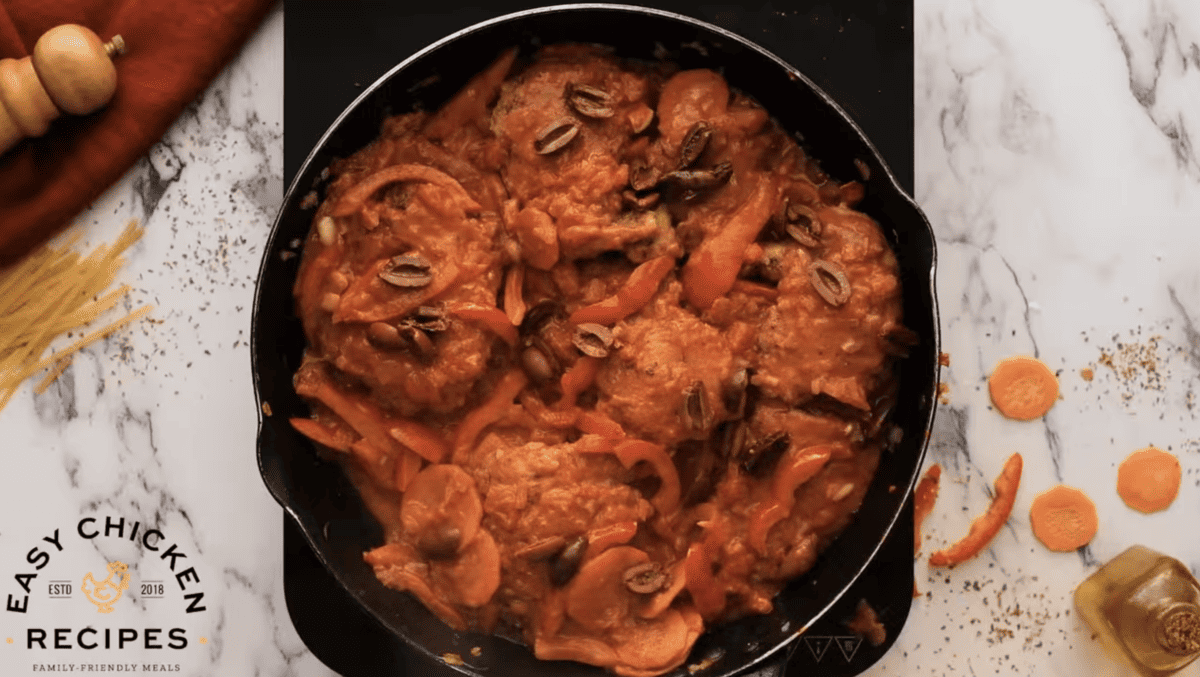
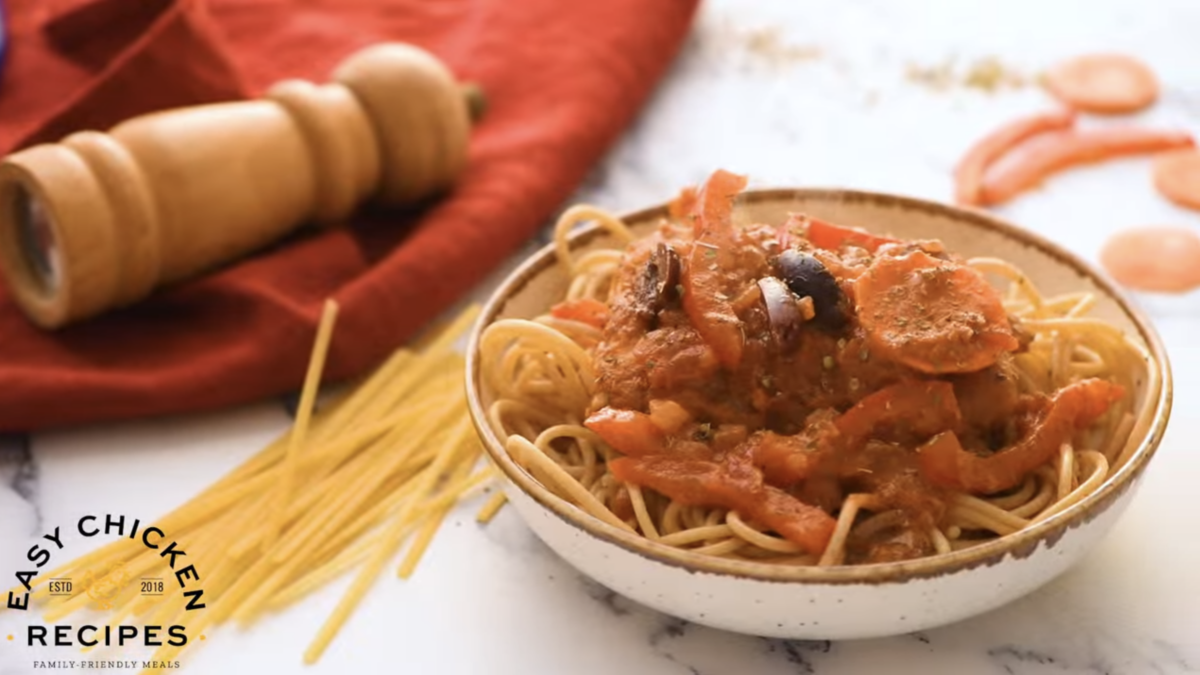
title: “Chicken Cacciatore Recipe” ShowToc: true date: “2024-11-23” author: “Alexandra Smith”
Why We Love This Chicken Cacciatore Recipe
Bursting with flavors of tomatoes and herbs, this Italian chicken recipe is a classic for good reason.
Simple. Although the ingredients list is long, a lot of them are pantry staples that you will already have to hand. One Pan. This recipe is all cooked in one skillet on the stovetop so clean-up is a breeze. Made From Scratch. This recipe is made with lots of veggies and fresh ingredients, so you can feel good about tucking in. It’s much easier than you think to make it too!
Variations on Easy Chicken Cacciatore
Cacciatore means ‘hunter’ in Italian, and this dish is often referred to as peasant food. Cheaper cuts of bone-in chicken are cooked with fresh vegetables and herbs for a really hearty and flavorful dish. It’s rustic in the best way possible. Bone in chicken thighs or leg pieces are best to use in this recipe. The bone helps to keep the chicken moist as well as adding lots of flavor from the fat. This can be made with chicken breast, but will require a shorter cooking time and you need to be careful not to overcook them as they can easily dry out.
How to Store and Reheat
Store leftover chicken cacciatore in an airtight container in the refrigerator for up to 3 days Reheat in the oven at 350°F until warmed through.
How to Freeze
Freeze chicken cacciatore in an airtight container for up to 3 months. Let thaw overnight in the refrigerator before reheating.
Serving Suggestions
Traditionally, chicken cacciatore was served with crusty bread or polenta. I love to serve it over rice or pasta. There are lots of veggies already included, but you can serve it alongside a garden salad or some grilled vegetables as well.
More Italian Chicken Recipes To Try
Baked Caesar Chicken Tuscan Chicken Chicken Alfredo Skillet Chicken Parmesan Crockpot Italian Chicken Baked Italian Chicken Skillet Lemon Chicken
Notes from the Test Kitchen
Make this recipe gluten-free by using a 1:1 GF all-purpose flour. The flour helps to thicken the sauce, so don’t skip it. Feel free to add other veggies to this dish like zucchini or mushrooms if you like.
How to Make Chicken Cacciatore Step by Step
Sear the Chicken: Heat 2 tablespoons olive oil in a large skillet. Season 6 bone-in, skin-on chicken thighs with ¼ cup of all-purpose flour, ½ teaspoon salt, and ½ teaspoon pepper. Brown both sides of the chicken. Remove the chicken and set aside. Sauté the Veggies: Place the 1 diced onion, 1 minced clove of garlic, 1 sliced yellow pepper, and 1 sliced red pepper into the pan with the remaining ½ teaspoon each of salt and pepper and sauté for 3-4 minutes. Add the Tomatoes: Add 28 ounces (1 large can) of diced tomatoes, 4 tablespoons of tomato paste, 2 sprigs of fresh thyme, 1 teaspoon of dried oregano, 4 basil leaves, ½ tablespoon of balsamic vinegar, and 1 tablespoon of granulated sugar. Stir to combine. Stir in the Wine: Add 1 cup of dry white wine and stir well. Simmer the Chicken: Add 1 cup of pitted kalamata olives and the chicken and allow to simmer for about 40 minutes, until the chicken is cooked and falling off the bone. Internal temperature of the chicken should be no less than 165°F. Garnish with parmesan cheese and fresh parsley, if desired, and serve over pasta or rice.



